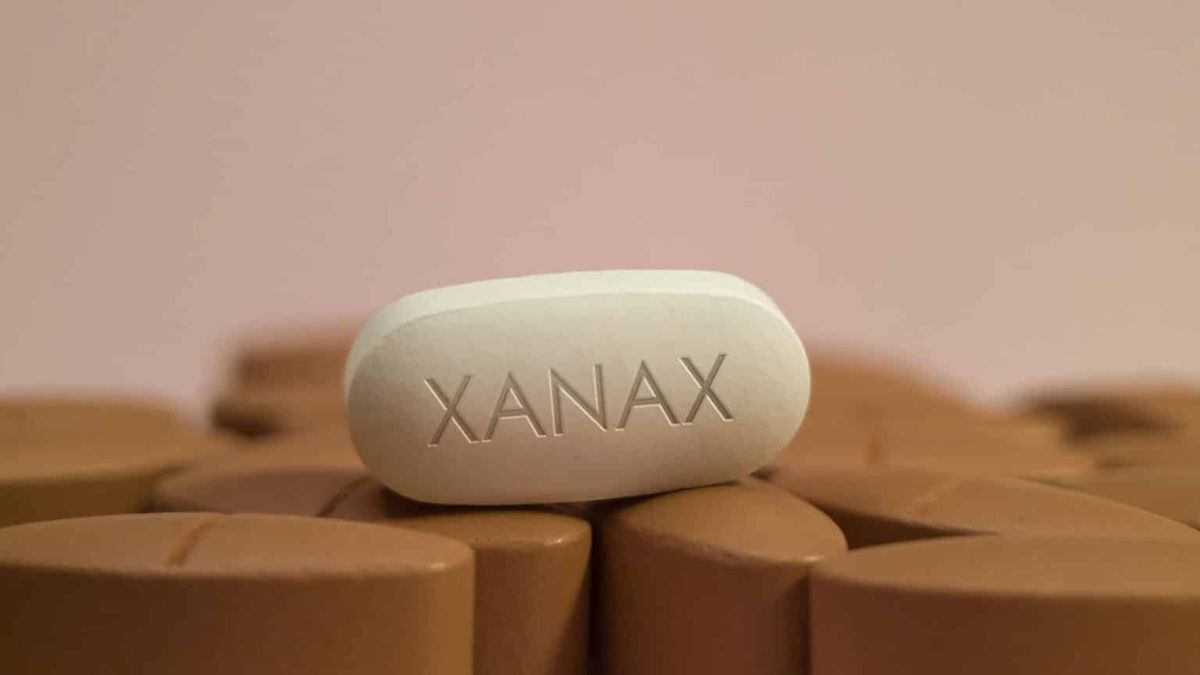Among the numerous issues that may arise post-childbirth, anxiety disorders, and postpartum depression are common.
Medications like Xanax (Alprazolam) are often prescribed to manage these conditions.
However, for breastfeeding mothers, their infant’s safety becomes a primary concern.
This article delves into the compatibility of Xanax and breast milk, exploring the potential implications for both mother and child.
What is Xanax?
Xanax, the brand name for alprazolam, is part of the benzodiazepine group of drugs.
This medication is typically prescribed to treat anxiety disorders and panic attacks.
Among the benzodiazepines, Xanax is one of the most commonly prescribed, followed closely by Lorazepam.
Xanax enhances the brain neurotransmitter GABA (gamma-aminobutyric acid), inducing feelings of relaxation and calmness.
This tranquilizing effect, however, comes with a potential for addiction due to its immediate relief properties.
Abrupt discontinuation of Xanax can lead to withdrawal symptoms such as tremors, sweating, depression, and suicidal thoughts.
Xanax in Breast Milk: The Basics
Regarding the compatibility of Xanax in breast milk, research has demonstrated that a small proportion of the drug does make its way into the mother’s milk.
This means that nursing infants are likely to ingest minor quantities of the drug.
Although the dosage levels are not life-threatening, they can lead to infant health issues, such as respiratory problems and sedation.
Effects of Xanax on Nursing Infants
An infant who ingests Xanax via breast milk may exhibit various symptoms.
For instance, the baby might appear less engaged with their surroundings, show signs of irritability, or experience increased drowsiness.
In severe cases, Xanax can affect the baby’s breathing and cause feeding problems, leading to weight loss or poor weight gain.
Regularly breastfeeding with milk containing Xanax can lead to withdrawal symptoms if the baby suddenly stops nursing or if the mother discontinues the drug.
Symptoms of withdrawal include increased crying, irritability, and poor sleep.
Effects of Xanax on Nursing Mothers
The use of Xanax while breastfeeding can also have a range of impacts on the mother.
This medication has been observed to increase the hormone prolactin, which aids in milk production.
While Xanax might lead to an increase in milk production, it can also impact the mood and hormones of the mother in other ways, potentially making breastfeeding more challenging.
Common side effects of Xanax use during nursing include:
- Irritability
- Difficulty concentrating
- Drowsiness
- Dizziness
- Nausea
- Constipation
- Joint pain
In addition, severe side effects such as confusion, lack of balance or coordination, shortness of breath, and seizures may occur.
Allergic reactions, such as breathing issues or swelling of the lips, face, throat, and tongue, are also possible.
Duration of Xanax in Breast Milk
The duration of Xanax in breast milk should be considered when breastfeeding. According to recent research, the half-life of Xanax in breast milk is approximately 14.5 hours.
This means that it takes about 14.5 hours for half of the Xanax present in breast milk to be eliminated from the body.
Therefore, if a nursing mother takes a single dose of Xanax, it is recommended to pump out the milk and discard it 14 hours after consuming the medicine.
This ensures that Xanax is flushed out of your system before you resume breastfeeding.
Safety Measures for Using Xanax While Breastfeeding
While breastfeeding and Xanax use is generally discouraged, there are instances where the medication might be necessary.
In such cases, specific safety measures should be followed to protect the health of the mother and the baby.
Firstly, it is vital to inform your healthcare provider that you are breastfeeding before they prescribe any medication, including Xanax.
If your healthcare provider still recommends Xanax while nursing, observe your baby for any side effects.
It is also recommended to pump and discard your milk for 14 hours after taking a single dose of Xanax.
This ensures the medication is out of your system before breastfeeding your baby.
However, if you need to use Xanax regularly, it could cause various health issues in your baby.
In such cases, if your physician believes that the benefits of the medication outweigh the benefits of breastfeeding, you may need to consider using donor or formula milk for your nursing infant.
Managing Anxiety While Breastfeeding
Given the potential risks associated with using Xanax while breastfeeding, alternative methods for managing anxiety are worth exploring.
Natural remedies for stress and anxiety include:
- Taking time for relaxation and recreational activities like listening to music, practicing yoga, or getting a massage.
- Seeking help from your partner, family members, or friends.
- Eating a well-balanced diet and avoiding skipping meals.
- Limiting caffeine intake and abstaining from alcohol.
- Prioritizing rest and sleep.
- Maintaining a positive outlook and welcoming humor into your life.
- Communicating openly with your loved ones about your feelings and experiences as a new parent.
These methods can help you manage your anxiety safely for both you and your baby.
Alternatives to Xanax While Breastfeeding
If you’re determined to continue breastfeeding but need medication to manage anxiety or panic disorders, you could consider safer alternatives to Xanax.
Selective serotonin reuptake inhibitors (SSRIs) like sertraline (Zoloft) and paroxetine (Paxil) are among the safest options.
They have minimal presence in breast milk and are unlikely to affect your baby.
Treatment for Xanax Abuse
If you’re struggling with Xanax abuse while breastfeeding, you must seek professional help immediately.
Addiction treatment professionals can offer tailored programs that blend several therapeutic approaches to promote holistic healing.
Transitioning to a healthier life without Xanax is possible, and the right support can make a significant difference in your journey to recovery.
Wrapping it Up
In conclusion, while Xanax can relieve anxiety and panic disorders, its use during breastfeeding has potential risks for both the mother and the baby.
The key takeaway is that the infant’s safety is paramount, and any decision regarding medication use during breastfeeding should be made in consultation with a healthcare provider.
Mothers can successfully navigate this challenging period with the right support and information, ensuring their and their infants’ health and well-being.
Remember, a healthy mother and a healthy baby are what matter most.
The information provided in this article is for informational purposes only and is not intended to be a substitute for professional medical advice, diagnosis, or treatment. Always seek the advice of your physician or other qualified healthcare provider with any questions you may have regarding a medical condition. Do not disregard or delay seeking professional medical advice because of something you read in this article.
Sources
- Drugs.com (2021, December 1). Xanax. Retrieved July 17, 2023, from https://www.drugs.com/xanax.html
- Medline Plus (2022, January 15). Sertraline. Retrieved July 17, 2023, from https://medlineplus.gov/druginfo/meds/a697048.html
- Food & Drug Administration (n.d.). XANAX® alprazolam tablets, USP. Retrieved July 17, 2023, from https://www.accessdata.fda.gov/drugsatfda_docs/label/2011/018276s045lbl.pdf
- American Addiction Centers (2023, May 19). Xanax Withdrawal Symptoms, Timeline & Detox Treatment. Retrieved July 17, 2023, from https://americanaddictioncenters.org/withdrawal-timelines-treatments/xanax
- Web MD (n.d.). Lorazepam – Uses, Side Effects, and More. Retrieved July 17, 2023, from https://www.webmd.com/drugs/2/drug-8892-5244/lorazepam-oral/lorazepam-oral/details







